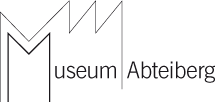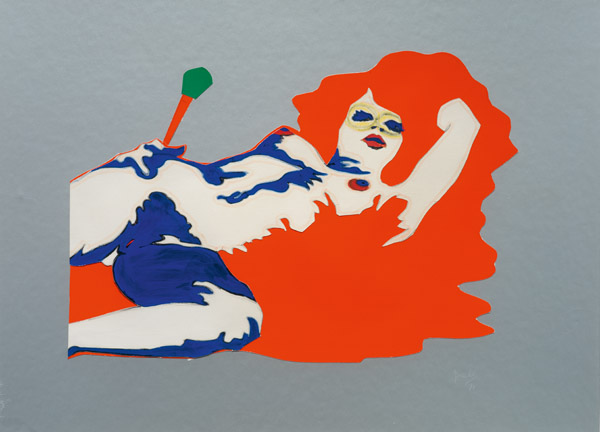The Museum Abteiberg’s exhibition AXELLERATION is the first comprehensive retrospective of the Belgian Pop Artist Evelyne Axell (1935–1972) to be held in Germany. As the title suggests (the neologism is derived from “accélération”), hers was a high-speed life and a high-speed oeuvre. Like James Dean and Grace Kelly, she died prematurely in a car crash, as a passenger in a sports car on a country road near Ghent. It was 1972, and she was 37 years old. She died at a point in her career when she had made her name and become established as one of only a few women artists in the male-dominated art world. Only a few years earlier, in 1969, she had won the acclaimed Prix de la jeune peinture belge, the most prestigious art prize in Belgium. In 1971, the Palais des Beaux-Arts in Brussels had hosted her second individual exhibition.
Axell found her artistic voice in a combination of surrealist procedures and the artificial pop aesthetic. In the process, she developed an erotically and psychedelically charged visual language and a dimension of Pop Art with a feminine coding. Her works are almost always nudes and frequently self-portraits. Evelyne Axell rebelled against social conventions and demanded the right to female libertinism. Taking her own fantasies and her own body as her point of departure, she demonstrated images of liberation, playing with the media representations of woman as an ideal of beauty, a pin-up, and a sex object. She adopted the strategies of the media and exploited the provocative subversion that results from such acts of appropriation: seductive poses, arousal and exhibitionism, erotic and pornographic impressions authored by a woman.
The exhibition in the Museum Abteiberg presents a psychedelic, surreal, visionary aesthetic from the time when plastic, Plexiglas and automotive paint became new artistic media. Axell used bold colours and a virtuosic, silkscreen-like, stylised technique to portray the human body. In 1967 she stopped painting on canvas and instead began using enamel paint on Plexiglas and other synthetic materials (including Clartex). Many of these works have a relief-like structure consisting of sharply contoured, smooth, and sometimes translucent areas that are often sawn and shaped into figures and profiles that project beyond the edges of the picture.
Over sixty items from the collections of her husband Jean Antoine and her son Philippe Antoine as well as from museums and private collections have been brought together for this exhibition.
In addition to series of paintings and object pictures, the exhibition also includes a few of the artist’s translucent screen pictures and small sculptures, a large number of paper collages and felt pen drawings, and a number of hitherto unpublished photographic self-portraits that were used as templates for her nude paintings.
A catalogue of the exhibition has been published by Lannoo Publishers: German/English, 112 pages, approximately 100 illustrations, an essay by Liesbeth Deutsch, a biography by Jean Antoine and Susanne Titz, as well as an introduction by Susanne Titz.
The exhibition and the catalogue were generously sponsored by the Hans Fries Foundation and the Ministry for Family, Children, Youth, Culture and Sport of the State of North Rhine-Westphalia.


